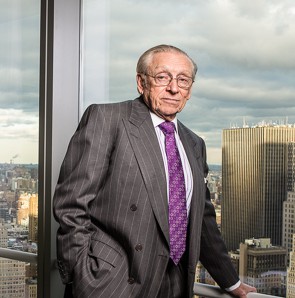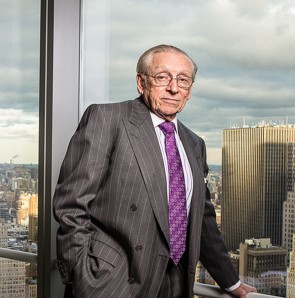How Will Silverstein Fund 2 World Trade Center?


The new World Trade Center retains an air of mystery around its financing, among other things. The multibillion dollar financing of 2 World Trade Center is the latest subject of speculation and fascination, with the Wall Street Journal reporting this week that Silverstein was turning toward Chinese investors as part of the EB-5 program for part of this financing. But as for the rest? The tower’s financing future actually seems murkier now than it might have even a few months ago. This leaves observers to search for clues in WTC developer Silverstein Properties’ pattern of puzzling together multiple creative financing options.
Having anchor tenants of the caliber of Rupert Murdoch’s News Corp. and 21st Century Fox—who’ve reportedly signed a letter of intent to be the anchor tenants of 2 World Trade Center—doesn’t hurt. Despite this, clarity eludes…and there are several reasons for this lack of clarity, including significant change at the Port Authority of New York & New Jersey, a key player in financing the new World Trade Center complex. The likelihood of Port Authority financing has been greatly reduced in the wake of public scrutiny and reform efforts brought to the fore by the Bridgegate corruption scandal. So how is Silverstein going to come up with the estimated $4 billion needed to construct 2 WTC, an amount that reportedly includes $500 million from an equity partner or mezzanine debt investor?
Let’s make it clear that we do not actually know the answer. However, we do know quite a bit about prior financing done by Marty Burger and Larry Silverstein, so we’ll take the liberty of speculating. Of course, Messrs. Burger and Silverstein might opt for traditional financing, from lenders or funds. But the development firm’s executives certainly have a penchant for creative and alternative financing. With that in mind, we have set out a few possibilities that they could potentially use to secure financing for 2 WTC, as well as obstacles that could lie on that path:
CalSTRS: The California State Teachers’ Retirement System has a joint venture with Silverstein Properties called Metro Fund, which has financed properties including a former Paramount Group office tower at 1177 Sixth Avenue. As a sophisticated player, CalSTRS knows it can play in different points in the capital stack, potentially coming in as an equity partner for 2 WTC or as one of multiple sources of debt funding for the rest of the money (or both). But, in a sign of risky times for Silverstein, the recent decision of fellow pension giant California Public Employees’ Retirement System to cut back on commercial real estate investment could be contagious, prompting retrenchment in CalSTRS, as well. Then again, perhaps CalSTRS will take advantage of reduced competition and double down on commercial real estate.
Wells Fargo: Though Silverstein often makes an end run around traditional lenders, it has worked with Wells Fargo, the lead lender on a $650 million loan for a condominium development Silverstein is building at One West End. And Wells is already involved in the WTC complex, acting as collateral agent on Legends OWO’s leasehold mortgage for the observation deck at One WTC.
Bonds: Bonds once played a major role in Silverstein’s financing efforts for the WTC complex, with $1.6 billion in tax-exempt Liberty Bonds financing Tower 3 alone. The Liberty Bonds are gone now, but that doesn’t mean bonds are necessarily off the table. For instance, Silverstein landed a $340 million round of financing through federal Recovery Zone bonds for 3 WTC.
EB-5 Visa Program: Silverstein is already using EB-5—which offers a path to citizenship for investors (and their families) who invest at least $500,000 in projects that create U.S. jobs—to raise about $250 million for a Four Seasons hotel and condo tower slated to open in Tribeca, and this week the Journal reported that they were making a push to use EB-5 on at least part of the financing for 2 WTC. The problem is that China is a major source of foreign investors. Even as China’s market collapse makes it more desirable for those with money to get it out of the country, it also makes it harder for them to do so.
Damage payments from airlines: In September, the Second Circuit of the U.S. Court of Appeals overturned a cap on losses set by a lower court, paving the way for Silverstein to seek more damages from United, American Airlines and other companies accused of negligence for failing to prevent 9/11. However, it’s not clear how much money this could mean or how long it would take to get it.
Crowdfunding: Silverstein already has a relationship with crowdfunding: some of its senior executives sit on the board of crowdfunding site Fundrise, which even offered investors participation rights in Liberty Bonds for 3 WTC. But, in general, crowdfunding sites are largely untested and tend to deal with fairly small amounts.
Rupert Murdoch: Though this option seems the most remote, Mr. Murdoch is already on track to being the anchor tenant of 2 WTC. Could the media baron also end up as an investor? Well, he has recently acquired Realtor.com’s parent company and is fighting Zillow as he elbows his way into the home sales information business; and, after all, stranger things have happened.
With Silverstein’s tried-and-true financing options drying out, it’s looking like the WTC developer will have to get even more creative than usual.
Ely Razin is CEO of CrediFi, a big data platform serving the commercial real estate finance market. He can be reached at ceo@credifi.com.


